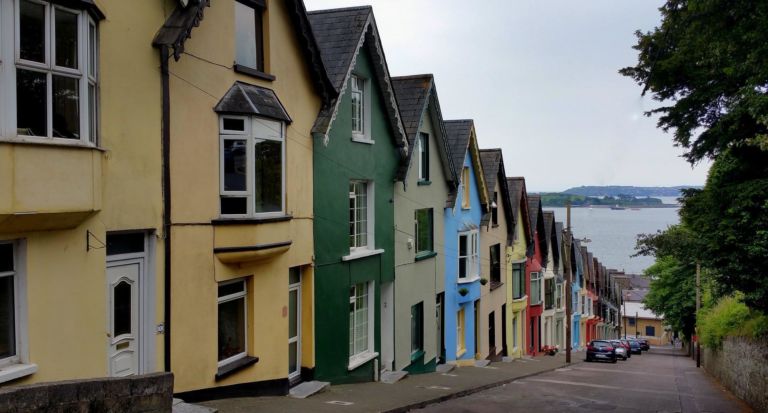What is the common element that connects Medicare, occupational licensing, free college, and affordable housing? According to Ed Glaeser in a recent interview, they illustrate how past efforts to improve life for the middle class have erected barriers to opportunity for young people.
Glaeser’s critique of public policy and economic opportunity makes him one of the few intellectuals at home both at Harvard, where he is a professor of economics, and at the free-market Manhattan Institute, where he is a senior fellow. Much of his research has documented how cities prosper, which has given him a great perspective on how public policies can sap their vitality despite the best intentions.
Part of the joy of life is taking on challenges and overcoming them. Risk is what makes growth possible for people, places, businesses, and economies. Risk is also the province of the young. Everything a young person does is a risk: the first word, the first step, the first date, the first time away from home. Once people get a toehold, they want to secure that and avoid falling back. Responsibility can feel like the enemy of risk, but responsibly protecting one’s gains leave unseen risk. The rich fool builds a bigger storehouse and tells himself, “Soul, you have many goods laid up for many years. Take your ease, eat, drink, be merry,” only to die once it is complete.
Over the past century, our rich country has taken steps to protect people from risks with Social Security, Medicare, zoning regulations, occupational licenses, minimum wages, and other programs. Glaeser sees that all of these contribute to the “number of ways in which the modern American economy isn’t working all that well for them [young people].” Young people see that “insiders have managed to stack the deck against outsiders.”
Unions protect their existing workers from company management and from new workers who would take less. So, new companies locate new facilities away from the unions, which cuts off growth in the first place. Though perhaps for those old enough, the cost is worth the original protection. Compare the Detroit of 1963 David Maraniss depicts in Once in a Great City with the Detroit of 2012 Charlie LeDuff depicts in Detroit: An American Autopsy.
“Prior to 1980,” Glaeser comments, “poor people moved to high-wage areas.” But it has become prohibitively expensive to live in those places because existing homeowners limited what could be done with the nearby properties. These restrictions leave housing supply unable to keep up with demand. As a result, “there’s this intergenerational redistribution that’s occurred by restricting housing supply,” which means “younger people just don’t have housing wealth.” Glaeser’s interviewer adds, “By 2013, a 35- to 44-year-old person at the 75th percentile had less than half as much home equity (adjusted for inflation) as his counterpart did 30 years earlier.”
Medicare now claims more than 3 percent of GDP and Social Security is over 5 percent of GDP. Both are growing faster than the rest of the economy. Although Social Security payments are capped along with contributions, both programs can be seen by a young person as helping “older rich people” which leads to one to ask, according to Glaeser, “ ‘If we’re going to spend a huge amount on Medicare, why aren’t we spending a whole lot on education for me?’ ”
Just as supporters of Bernie Sanders like to describe their program as “democratic socialism,” Glaeser does not see a call for government ownership and so not “socialism.” Instead, he labels it “hyperredistribution” with punishing taxes on income and wealth to pay for benefits to the poor and middle class. This willingness to shift cost also marks a departure from the Obama-era language that “we’re all in this together.”
Fortunately, we have an opportunity to follow those of a previous generation and “advocate for freedom, not only because of its economic benefits but also because all humans deserve a chance to chart their destiny, free from the overweening grip of the state.” New members of the Raleigh City Council are willing to give homeowners more flexibility to create more housing in their backyards and ease height restrictions. Other zoning rules could also be loosened. Occupational licensing, which restricts opportunities to work, is in retreat in other states and under threat in North Carolina. Some places have even begun to ensure protections for child entrepreneurs and their lemonade stands against overly zealous regulators.
One of the lessons Ed Catmull, co-founder and former president of Pixar, shares in his book Creativity, Inc., is, “The cost of preventing errors is often far greater than the cost of fixing them.” Public policy has tried to prevent errors and hardship. Even those who seek to expand government protections through a universal basic income or free college tuition now do so as a way to make it easier for people to take risks and reduce the cost of failure. Still, they do so by unnecessarily limiting the returns on risk.
Our task is to bring balance to the force of government. Can we now convince others that some existing protections punish newcomers or force people to remain entrenched where they are? Can we demonstrate that families, churches, and communities outside government can provide protection from failed risks in different and often better ways than the one-size-fits-none approach of government rules and programs? Reducing barriers to a better life, that’s what we do.


